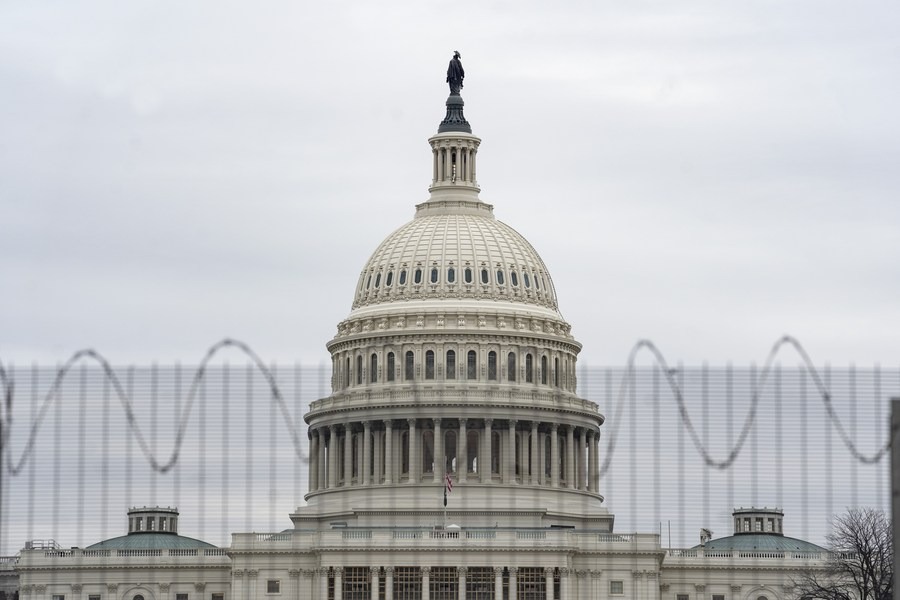Point of contest


Technology will be the key factor in the strategic competition between China and the US over the next decadeTechnology will be the key factor in the strategic competition between China and the US over the next decade
Since Joe Biden took office as the president of the United States, the country has adopted a "smart competition" policy toward China. Internationally, it strives to build and enhance US-led economic alliance networks, reinforcing the G7 and establishing new regional economic cooperation mechanisms such as the "Indo-Pacific" Economic Framework for Prosperity, the US-EU Trade and Technology Council and the Minerals Security Partnership. The US has also identified strategic fulcrum nations — such as the United Kingdom, Japan, the Republic of Korea, Australia and India — for industrial and technological cooperation on a bilateral level. It aims to form a coordinated stance against China in global economic competition. Domestically, in a departure from the norm, Washington has adopted legislation with an industrial policy nature in infrastructure, chips, new energy and among others, to comprehensively boost the revival of US industries.
However, under the extreme pressure from the US, China's political, economic, and social systems have shown great resilience. In contrast, the US is bearing the brunt of various high costs. Especially after facing two geopolitical crises — the Ukraine crisis and the Palestine-Israel conflict — the dominance of US global hegemony seems stretched. In this context, the US has adjusted its strategic goal from defeating China over the short term to outcompeting China over the longer term, aiming to replicate the victory over the Soviet Union without warfare in 10 years. The next decade will see decisive strategic competition between China and the US.
For China-US relations over the next decade, technological competition will be the key factor in this decisive battle. The global hegemonic status of the US depends on it having leading capability in technology. The powerful military and financial hegemonies of the US — the two critical pillars for its hegemony — are both reliant on the US' capacity for technological innovation. Otherwise, these two hegemonies would be difficult to sustain. The competition between China and the US in the technological field is divided into two dimensions — the competition in tech innovation and the competition in tech application, which is highly dependent on a relatively complete industrial ecosystem. Currently, the US' domestic tech innovation ecosystem has not been greatly impacted, and the nation's overall tech innovation system, represented by Silicon Valley, remains quite active. The US' ability to lead technological innovation in the international economic system is still very strong, especially apparent in the field of artificial intelligence, with companies such as Apple, Nvidia, Google Inc, Microsoft and SpaceX showcasing the strong technological innovation capability of the US private sector. However, due to a large amount of industrial transfer and domestic industrial decline, the US has been negatively impacted in terms of tech application and industrialization. For example, even with its leading technologies in the electric vehicle industry, Tesla still chose to invest and set up factories in China to win the global competition.
The US is in a state of "deindustrialization" against the backdrop of globalization, and its tech innovation lacks sufficient support in industrial transformation and application scenarios. Hence, the nation's tech innovation can be described as "innovation without industrial support". This is also a main reason why the Biden administration is promoting a modern industrial strategy centered on "friendshoring" or "reshoring".
Meanwhile, to compensate for the lack of domestic application scenarios, the US is actively advancing its tech diplomacy, improving its innovation environment and enhancing its innovation drive through international tech cooperation. Currently, the Biden administration is vigorously conducting tech diplomacy in semiconductors, artificial intelligence, and aerospace, building a transnational technology cooperation network to enhance its leading capability in the technology field. Among these efforts, the most noteworthy are the US' construction of a chip alliance and the Artemis Accords, aimed at advancing a new round of lunar exploration and the utilization of space resources. The chip alliance aims to prevent China from achieving technological breakthroughs in the semiconductor industry by establishing multinational coordinated technology export controls. The Artemis Accords is intended to win the initiative in the moon race against China through multinational cooperation and resource sharing.
China on its part has a strong industrial base and a complete industrial ecosystem, with enterprises such as Huawei, DJI, BYD, CATL and Commercial Aircraft Corp of China continuously seeking incremental technological innovations and securing significant technological accomplishments. China's proactive industrial clusters provide strong industrial support for tech innovations of businesses, and the nation's vast consumer market offers abundant application scenarios for tech innovation. However, China is facing challenges in the development of basic science and bringing in talent. Moreover, if the US forms a technology alliance against China with other Western countries, cutting off China's overseas technology sources, China may face high costs for systemic tech innovation on its own. Therefore, how to maintain China's innovation capacity and momentum under the pressure from the US is a test for the rise of China as a major country.
In the coming decade, China should strive for balanced efforts in several aspects, including systemic institutional design and reform, to comprehensively enhance its tech innovation capacity.
First, balance the innovation led by State-owned enterprises and that led by private enterprises. State-owned and private enterprises have different characteristics and strengths in tech innovation. SOEs, with their strong financial resources, technological capacity and focus on long-term planning serve as the main force in technological innovation. Private enterprises are more flexible, market-oriented and sensitive to new technologies. The two types of businesses need to cooperate and complement each other. For example, in the face of the competitive pressure from the US in the space field, China should not solely rely on State-led investment but also encourage private enterprises to join the exploration of space technology.
Second, balance efforts to encourage incremental innovation and disruptive innovation. The US is a country rich in innovative spirit, thus able to take the lead in multiple technology and industrial revolutions. In contrast, Japan excels at incremental innovation, with strong national technological strength. In this sense, China needs to strike a balance between encouraging the accumulation of technologies while promoting disruptive technological innovations in order to take the lead in the technology sector.
Third, balance efforts to encourage independent and open innovation. China must strive to strengthen weak links in its economic system to enhance its self-sufficiency in core technologies. However, technological innovation follows its own patterns, and any significant technological innovation involves the division of labor and joint efforts of all humanity. The more intense the competition between China and the US becomes, the more China needs to enhance its openness to technological innovation, actively engage in technology diplomacy, carry out technological cooperation with countries around the world, and bring in global talents.
The author is deputy dean of the School of International Studies at Renmin University of China. The author contributed this article to China Watch, a think tank powered by China Daily.
The views do not necessarily reflect those of China Daily.
Contact the editor at editor@chinawatch.cn.


































